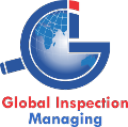In the modern business landscape, where the strength of an organization’s supply chain can be the difference between success and failure, supplier development emerges as a crucial strategic function. This practice transcends traditional buyer-supplier relationships, fostering a deeper collaboration that focuses on nurturing and enhancing a supplier’s performance and overall capabilities to meet the evolving needs and objectives of the purchasing organisation.
Far from being a mere transactional interaction, supplier development is rooted in the recognition that suppliers are integral partners whose growth and operational health directly impact the purchasing organisation’s ability to compete and innovate in the marketplace. It’s a symbiotic relationship, where suppliers are provided with the tools and guidance to improve and the benefits manifest in the form of higher quality products, better service and, often, more favourable costs.
Goals of Supplier Development
This strategic approach requires your organization to take a proactive stance, actively investing in your suppliers’ processes, technology and human capital. The aim is to create a resilient, agile and ethically sound supply base that can withstand market fluctuations, adapt to new challenges and contribute to mutual growth and success.
Engaging in supplier development is not just about ensuring the next shipment arrives on time; it’s about building a supply chain that can be a source of competitive advantage, innovation and sustainability. It’s about crafting a network of suppliers that operate as an extension of your organisation’s own business, sharing in its values, striving towards its quality benchmarks and contributing to its strategic milestones.
In the following sections, we’ll explore the benefits of supplier development for both your organisation and your suppliers as well as the critical steps involved to achieve, among others, enhanced product quality, reduced costs and improved product delivery and innovation for a stronger supply chain.
What are the Benefits of Supplier Development?
The pursuit of supplier development is a strategic choice that offers a spectrum of benefits, extending well beyond simple procurement efficiency. When an organisation decides to invest in the growth and capabilities of its suppliers, it sets off a ripple effect of improvements and opportunities that can be felt across both entities.
Enhanced competitiveness through cost reductions and quality improvements: For the buyer, supplier development is a gateway to achieving a more competitive stance in the market. By working with suppliers to reduce costs and streamline processes, the buyer can enjoy lower procurement expenses without compromising on quality. Furthermore, improvements in the quality of materials or services received can result in a superior end product, which, in turn, strengthens the buyer’s market position.
Increased supplier commitment and loyalty: From the supplier’s perspective, such development initiatives signal a commitment to their business, fostering a stronger sense of allegiance and loyalty. This deepened engagement often translates into the supplier being more responsive and invested in the buyer’s success, leading to preferential treatment and prioritisation of the buyer’s needs.
More collaborative supplier relationships that lead to innovation: Collaboration is another significant benefit of supplier development. When buyers and suppliers work together closely, they share knowledge and innovate collectively. This teamwork can lead to breakthroughs in product design, material use and manufacturing processes, benefiting both parties. The buyer gains access to new, innovative products and services, and the supplier expands their capabilities and market offerings.
Reduced supply chain disruptions due to supplier issues: One of the most practical benefits is the reduction in supply chain disruptions. Suppliers that are well-integrated into the buyer’s development programmes are more likely to be reliable, as they understand the buyer’s expectations and are equipped to meet them. This reliability can significantly reduce the risk of disruptions that lead to delays, stockouts and, ultimately, lost sales.
Better risk management and supply chain transparency: Finally, supplier development promotes better risk management and enhances transparency within the supply chain. Buyers gain a clearer view of their suppliers’ operations, which allows for more effective monitoring and management of potential risks. This visibility is not only crucial for the buyer’s risk mitigation strategies but also enables suppliers to better align themselves with the buyer’s risk profile and compliance requirements.
5 Key Steps to Take in the Supplier Development Process
Now that the objectives and benefits of supplier development are clear, what are the five key steps you need to take to establish a supplier development process that works for your organisation? We outline them here:
1. Choose a Supplier
The selection of a supplier is a multi-faceted decision-making process that goes beyond the simple comparison of prices. Companies should evaluate potential suppliers on a range of factors, including:
· Cost: Analyse not just the initial prices but also consider the total cost of ownership, which includes after-sales service, delivery costs, payment terms and potential cost savings over time.
· Quality: Assess the supplier’s ability to provide goods or services that meet your specifications and quality requirements consistently.
· Reliability: Consider the supplier’s track record for delivering on time and their ability to respond to unexpected demands.
· Compatibility: Evaluate whether the supplier’s business practices, corporate culture and ethical standards align with your company’s.
· Capacity and Scalability: Ensure the supplier has the capacity to meet your current demands and the flexibility to scale up as your needs grow.
· Technological Capability: Verify the supplier’s level of technology and their ability to keep pace with industry innovations.
· Strategic Fit: Analyse how well the supplier complements your company’s long-term strategic goals, including entering new markets or sustainable practices.
2. Rate the Supplier using KPIs
Once a supplier is onboard, you should set Key Performance Indicators (KPIs) that allow you to ascertain a current benchmark of where they are at. These include:
· On-Time Delivery Rate: How frequently does the supplier deliver goods on or before the promised delivery date?
· Quality Acceptance Rate: What percentage of products are received without defects or that meet the quality standards?
· Response Time to Issues: How quickly does the supplier address and resolve issues or queries?
· Cost Competitiveness: How able is the supplier to provide cost-effective solutions without compromising on quality?
· Innovation Contribution: How often and relevant are the supplier’s suggestions for product or process improvement?
3. Conduct Supplier Audits
Regular supplier audits are essential for ensuring compliance and continuous improvement. Consider the following audits:
On-Site Evaluations: Visit the supplier’s facility to assess operational processes and the actual working conditions.
· Process Reviews: Evaluate the efficiency and effectiveness of the supplier’s processes to ensure they align with agreed standards.
· Quality Checks: Inspect the products and review quality control and testing methods to confirm they meet required specifications.
· Compliance Verification: Check to ensure the supplier meets all industry-specific regulations and standards.
4. Measure Supplier Performance
Audits in and of themselves are not enough. You need to have a continuous measurement and feedback system is place both to assess current capabilities and to plan future further development of the suppliers you use:
· Performance Tracking: Use the KPIs you have set to monitor performance trends over time.
· Benchmarking: Compare the supplier’s performance against industry best practices or competitors to identify areas for improvement.
· Feedback Mechanisms: Establish clear channels for providing the supplier with regular performance feedback.
· Corrective Action Plans: Develop and implement action plans with the supplier to address any performance issues.
5. Develop and Manage Supplier Capabilities
The final step involves a proactive approach to enhancing the supplier’s capabilities. Here are some ideas to consider:
· Technical Support: Provide access to better technology or expertise to improve the supplier’s production capabilities.
· Operational Assistance: Help streamline the supplier’s processes to improve efficiency and productivity.
· Co-Investment: Participate in joint investments for process upgrades or new technology that can benefit both parties.
· Joint Product Development: Collaborate on developing new products which could give a competitive advantage and open up new markets.
· Training and Education: Offer training programmes to develop the supplier’s workforce, improving their skill levels to meet your company’s needs.
As we have seen, supplier development is not a mere operational tactic but a strategic approach that can yield a competitive edge in today’s fast-paced market. It’s a win-win scenario where the buying company benefits from improved supply chain reliability and performance, and suppliers enjoy increased business and opportunities for growth. A systematic approach to supplier development, rooted in clear goals and robust processes, is essential to realising these benefits. Through commitment to this strategy, your organisation can forge stronger, more robust and resilient supply chains that are capable of meeting the challenges of modern commerce.
Discuss with us how to implement an effective supplier development process in your organisation today.

